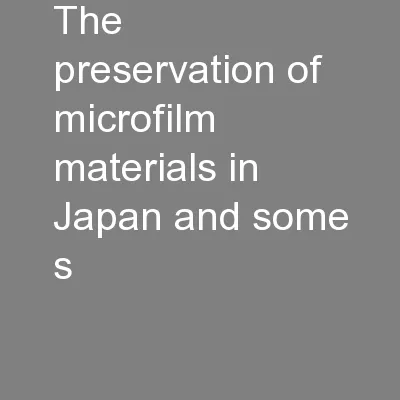PPT-Blood Preservation and Storage
Author : willow | Published Date : 2022-02-15
blood is collected as whole blood as shown below Blood can be stored as whole blood with all of the plasma present or much more commonly as packed red blood cells
Presentation Embed Code
Download Presentation
Download Presentation The PPT/PDF document "Blood Preservation and Storage" is the property of its rightful owner. Permission is granted to download and print the materials on this website for personal, non-commercial use only, and to display it on your personal computer provided you do not modify the materials and that you retain all copyright notices contained in the materials. By downloading content from our website, you accept the terms of this agreement.
Blood Preservation and Storage: Transcript
Download Rules Of Document
"Blood Preservation and Storage"The content belongs to its owner. You may download and print it for personal use, without modification, and keep all copyright notices. By downloading, you agree to these terms.
Related Documents














